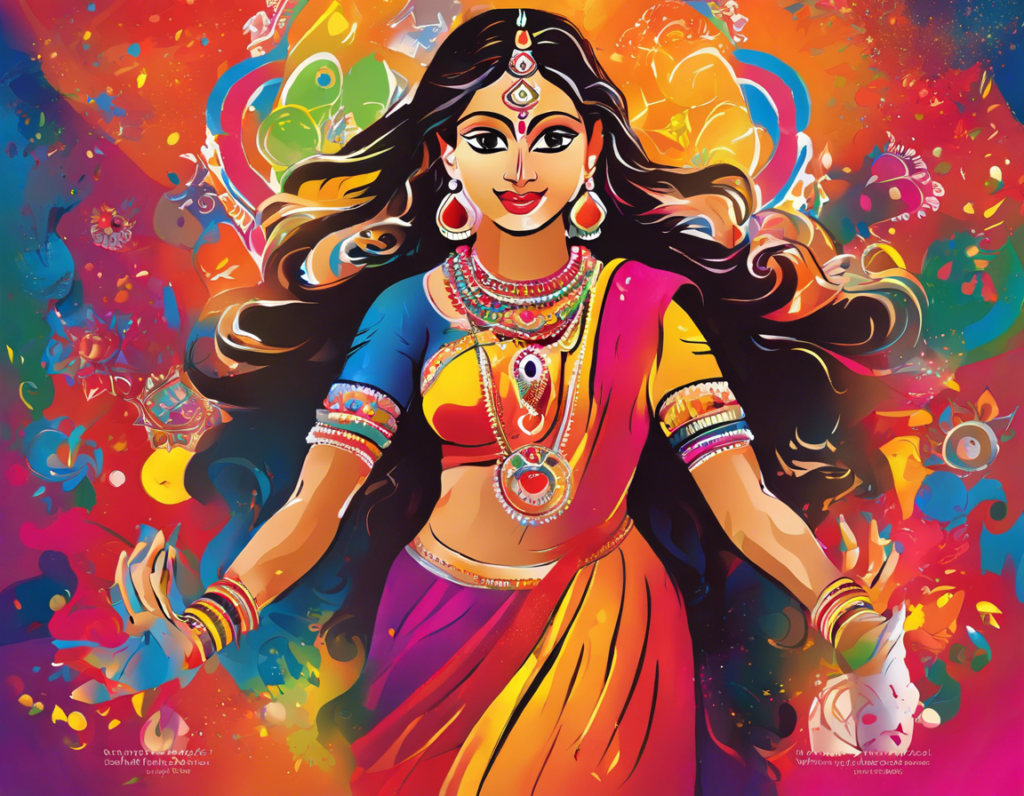Exploring the Vibrant Colors of Navratri 2023
Introduction
Navratri is a popular Hindu festival celebrated with great joy and enthusiasm across India and in various parts of the world. The word ‘Navratri’ translates to ‘nine nights’ in Sanskrit, with each day dedicated to worshipping different forms of Goddess Durga. One of the unique aspects of Navratri celebrations is the vibrant display of colors that are associated with each day of the festival. These colors hold significant spiritual and cultural importance, and they add to the festive fervor of Navratri. In this article, we will delve into the symbolism and significance of the vibrant colors of Navratri and explore the stories and rituals associated with each color.
The Significance of Colors in Navratri
Colors play a crucial role in the celebrations of Navratri, with each day representing a different color that is associated with various qualities and deities. The colors are believed to represent the different manifestations of Goddess Durga and are also linked to the nine planets in Hindu astrology. Wearing these specific colors on each day of Navratri is said to bring blessings and prosperity to the devotees. Let’s dive into the significance of each color:
1. Day 1: Grey
Grey, the color of the first day of Navratri, represents peace and calmness. It is associated with Goddess Shailputri, the embodiment of strength and divine motherhood. Devotees wear grey-colored attire on this day to seek blessings for inner peace and stability.
2. Day 2: Orange
On the second day of Navratri, orange is the color of choice, symbolizing energy and positivity. This color is dedicated to Goddess Brahmacharini, who is worshipped for her perseverance and penance. Orange is believed to invoke enthusiasm and dynamism in the lives of devotees.
3. Day 3: White
White is the color of purity and peace, associated with the third day of Navratri and Goddess Chandraghanta. This serene color signifies harmony and clarity and is worn to seek protection and blessings for a peaceful life.
4. Day 4: Red
The fourth day of Navratri is adorned with the color red, representing power and action. Goddess Kushmanda, the creator of the universe, is worshipped on this day. Red symbolizes strength, passion, and vitality, and wearing this color is believed to bring courage and vigor.
5. Day 5: Royal Blue
Royal blue is the chosen color for the fifth day of Navratri, symbolizing divinity and loyalty. This color is associated with Goddess Skandamata, the mother of Lord Skanda. Devotees wear royal blue to invoke a sense of loyalty, strength, and spiritual growth.
6. Day 6: Yellow
On the sixth day of Navratri, yellow shines bright, representing joy and happiness. Goddess Katyayani, the warrior form of Goddess Parvati, is worshipped on this day. Yellow is believed to bring positivity, optimism, and prosperity to the lives of devotees.
7. Day 7: Green
Green is the color of the seventh day of Navratri, symbolizing nature and fertility. This color is dedicated to Goddess Kalratri, the fierce form of Durga. Green represents growth, harmony, and rejuvenation, and wearing it is said to bring balance and abundance.
8. Day 8: Peacock Green
On the eighth day of Navratri, peacock green is the color that signifies elegance and beauty. Goddess Mahagauri, the epitome of beauty and serenity, is worshipped on this day. Peacock green is associated with renewal, grace, and serenity, bringing a sense of tranquility to the devotees.
9. Day 9: Purple
The final day of Navratri is adorned with the color purple, symbolizing spirituality and wisdom. Goddess Siddhidatri, the granter of knowledge and divine wisdom, is worshipped on this day. Purple represents luxury, power, and spiritual enlightenment, inviting blessings of wisdom and self-realization.
FAQs (Frequently Asked Questions)
Q1: Why are colors so important during Navratri celebrations?
A1: Colors hold deep symbolic significance in Hindu culture and are believed to represent different aspects of life, qualities of deities, and cosmic energies. Wearing specific colors during Navratri is considered auspicious and is believed to attract positive energies and blessings.
Q2: Can I wear multiple colors on the same day of Navratri?
A2: While it is ideal to wear the specified color for each day of Navratri, you can also combine multiple colors or accessories to incorporate all the colors associated with the festival.
Q3: Are there any restrictions on the type of clothing one should wear during Navratri?
A3: There are no strict restrictions on the type of clothing, but it is recommended to wear traditional attire like sarees, lehengas, or kurta-pajamas to imbibe the festive spirit of Navratri.
Q4: What is the significance of the ninth day of Navratri?
A4: The ninth day of Navratri, also known as Mahanavami, is considered highly auspicious and marks the culmination of the festival. It is believed that on this day, Goddess Durga annihilated the demon Mahishasura, symbolizing the victory of good over evil.
Q5: How can one celebrate Navratri if they are unable to visit a temple or attend public gatherings?
A5: If you are unable to visit a temple or join public celebrations, you can still participate in Navratri festivities by creating a sacred space at home, performing daily puja rituals, chanting mantras, and immersing yourself in devotional activities.
Conclusion
Navratri is a time of joy, devotion, and spiritual awakening, and the vibrant colors associated with each day of the festival add a beautiful dimension to the celebrations. By understanding the symbolism and significance of these colors, devotees can connect with the divine energies of Goddess Durga and invite blessings of prosperity, peace, and happiness into their lives. May the colors of Navratri illuminate your path with positivity and grace as you immerse yourself in the festive spirit of this auspicious occasion.
